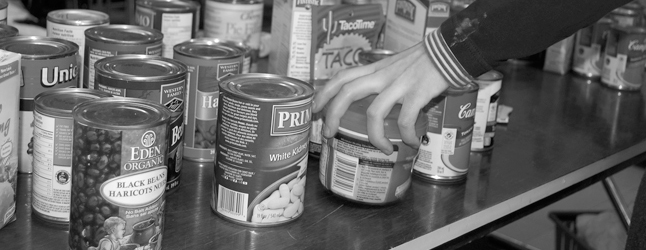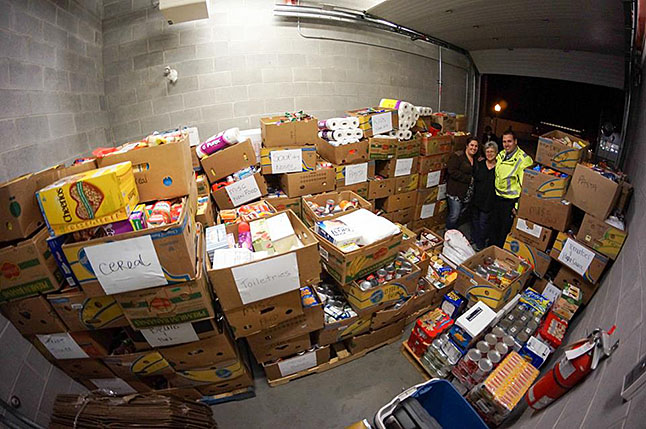
By David F. Rooney
It’s only mid-July but Patti Larson is already thinking ahead to the Food Bank’s most important food drive of the year – the Emergency Services Food Drive in September – and she’s really sweating bullets.
Oh, she’s not worried about the public’s response to the drive; Revelstokians are by nature very supportive of their less-well-off friends and neighbours. No, her anxiety arises out of a very simple question: Where, O, where can she store the thousands of pounds of food people will donate when the firemen, cops, wardens, army cadets, girl guides, brownies and other participants come kn0cking on front doors all over town on September 21 – 22.
“We need at least 500 square feet of clean dry space to store at least 12 full pallets of food; some place that will accept a forklift,” Patti said during an interview at Community Connections last week.

While Patti is feeling a little anxious about that, other recent developments in the community’s response to the Food Bank’s offer a burst of sunshine.
She is very encouraged by the Food Recovery Program that sees supermarkets and other businesses donating food that may be just past its best-before date but is otherwise perfectly good, healthy comestibles.
“The Food Recovery Program yields perishable foods we can distribute, such as bread, dairy, meat, cheese and other proteins,” Patti said. And then there is the Gleaning Project that sees Bear Aware encouraging people to donate wind-fallen fruit to the Food Bank. Nor can we ignore the many vegetable gardeners who donate portions of their crops to help feed hungry families.
Innovations like those help make the Food Bank a success, but Patti still worries about her storage issue. If you think you have the space Patti needs please give her a shout at Community Connections, 250-837-2920.



